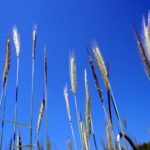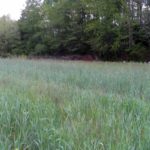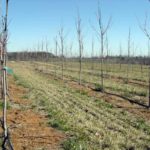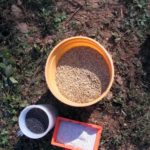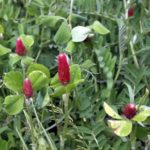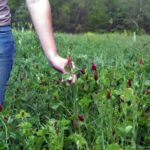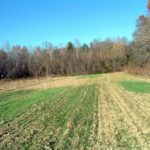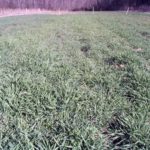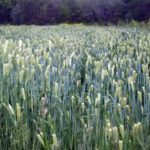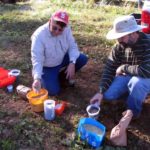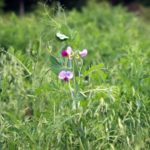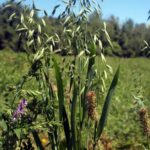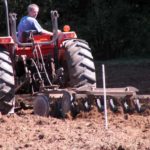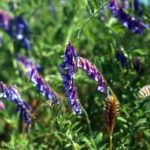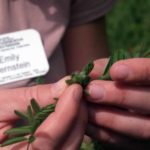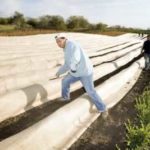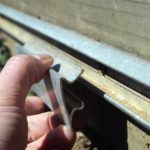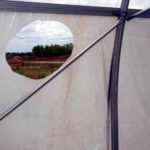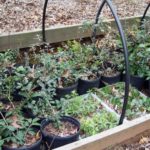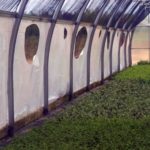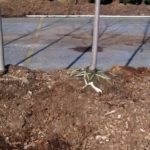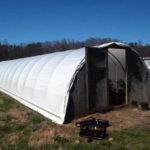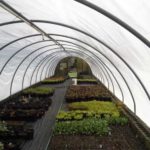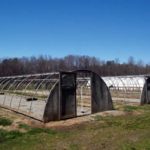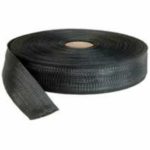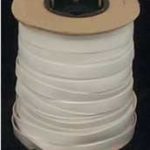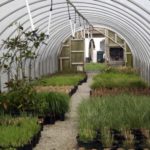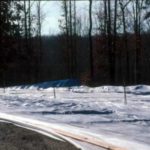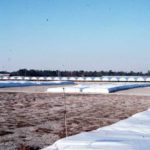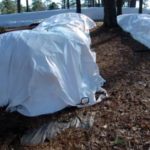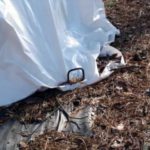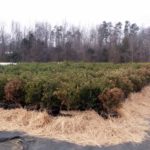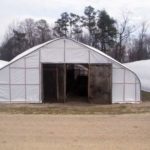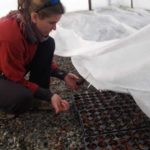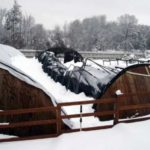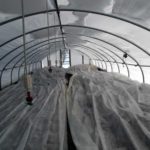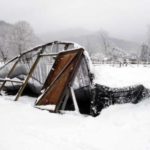Cultural Practices
go.ncsu.edu/readext?491612
en Español / em Português
El inglés es el idioma de control de esta página. En la medida en que haya algún conflicto entre la traducción al inglés y la traducción, el inglés prevalece.
Al hacer clic en el enlace de traducción se activa un servicio de traducción gratuito para convertir la página al español. Al igual que con cualquier traducción por Internet, la conversión no es sensible al contexto y puede que no traduzca el texto en su significado original. NC State Extension no garantiza la exactitud del texto traducido. Por favor, tenga en cuenta que algunas aplicaciones y/o servicios pueden no funcionar como se espera cuando se traducen.
Português
Inglês é o idioma de controle desta página. Na medida que haja algum conflito entre o texto original em Inglês e a tradução, o Inglês prevalece.
Ao clicar no link de tradução, um serviço gratuito de tradução será ativado para converter a página para o Português. Como em qualquer tradução pela internet, a conversão não é sensivel ao contexto e pode não ocorrer a tradução para o significado orginal. O serviço de Extensão da Carolina do Norte (NC State Extension) não garante a exatidão do texto traduzido. Por favor, observe que algumas funções ou serviços podem não funcionar como esperado após a tradução.
English
English is the controlling language of this page. To the extent there is any conflict between the English text and the translation, English controls.
Clicking on the translation link activates a free translation service to convert the page to Spanish. As with any Internet translation, the conversion is not context-sensitive and may not translate the text to its original meaning. NC State Extension does not guarantee the accuracy of the translated text. Please note that some applications and/or services may not function as expected when translated.
Collapse ▲Cultural practices should be visited first before making any changes to production. For example, changing production behavior and adding value by incorporating cover crops into soils, pruning and staking plants to improve quality, increasing success overwintering plants, and recycling plastics and wastes.
Cover Crops
Technical Publications
- Dabney et al. 2001. Using cover crops to improve soil and water quality. A review of the effect of cover crops on the entire production system. COMMUN. SOIL SCI. PLANT ANAL., 32(7&8), 1221–1250 (2001)
- Creamer & Dabney. 2002. Killing cover crops mechanically: Review of recent literature and assessment of new research results. Evaluates of various methods for killing cover crops and their effect on specific crops. Amer. J. Alt. Ag. 17:32-40 (2002).
- Hartwig & Ammon. 2002. Cover crops and living mulches. A review of cover crops as living mulches. Weed Science 50:688–699 (2002).
Extension Publications
- Bilderback. From the ground up: field soil considerations. Annotated power point as pdf document that covers field production specifically.
- Bilderback. Conservation and nutrient management practices for field production of nursery stock. Dr. Ted Bilderback discusses nutrient management planning and offers best management strategies to conserve resources.
- Bilderback and Bir. Building nursery soils. Dr. Ted Bilderback and Dick Bir teach you how to improve soil for field production.
- Rasnake, Dunwell & Reston. 1998. Winter cover crops for Kentucky gardens and fields. Good resource From Kentucky Cooperative Extension for small scale agriculture using winter cover crops.
- Halcomb. 2010 Summer cover crops for nursery row middles. Excellent advice from one of the premiere authorities on field production of ornamentals at U. Tenn. Extension Service.
- Halcomb. 2002. Clover alternatives for nursery middles. Another piece of sage advice from Mark Halcomb at UT Extension. He offers practical advice about certain cover crops and outlines the strategies for choosing them for row middles.
- Badlwin & Creamer 2006. Cover crops for organic farms. Combines research with on-farm application to produce a definitive resource on the topic from NCCES and Center for Environmental Farming Systems.
- Lee et al. 2011. Success with cover crops. An electronic bulletin from U. Georgia (EB 102 2), which is an annotated power point as .pdf document, that covers everything in cover crops from establishment to killing, and nitrogen requirements and contributions.
General References
- Managing cover crops profitability. Third edition. The resource for using cover crops on farms and nurseries. Handbook Series Book 9. Published by the Sustainable Agriculture Network, Beltsville, MD A publication of the Sustainable Agriculture Network with funding by the Sustainable Agriculture Research and Education Program of CSREES, U.S.Department of Agriculture.
- Farm seed cover crop comparison chart. A table that compares various attributes of cover crop seeds from Johnny’s Selected Seeds – http://www.johnnyseeds.com/.
- Loynachan. Nitrogen fixation by forage legumes. Great resource from Iowa State that matches legume to its inoculate and provides resources to purchase both. Also explains nodulation.
Videos
Managing Cover Crops: Part 1
Managing Cover Crops: Part 2
Photos
Staking
- Bilderback. In support of plants grown in big containers – tree staking systems. Dr. Bilderback offers an annotated powerpoint as pdf document to discuss staking large trees grown either above ground or in pot in pot.
Pruning
Pruning is probably the single most important practice to improve quality of shade trees and woody ornamentals. Learn methods, theories, grading strategies and best practices below.
Extension Publications
- Fair. 2015. Pruning Trees and Shrubs Series. Pruning Trees & Shrubs series introduces basic pruning concepts and key terms. Subsequent publications in the series provide more information on woody plant biology, necessary tools and pruning guidelines for general purposes and specific species.
- Fitzgerald and Ries 2016. Selection planting and care of new trees. Oregon State University extension document about managing new trees in the landscape.
- Wade and Midcap 2007. Pruning ornamental plants in the landscape. University of Georgia Extension addresses tree management in the landscape.
- Rakow and Weir III. 2005. Pruning: An illustrated guide to pruning ornamental trees and shrubs. Beautiful treatment of pruning various trees, shrubs, vines, roses, and espaliered plants. Contains a glossary, pictures and demonstrations. http://hdl.handle.net/1813/3573.
- McQuilkan. 1950. Effects of some growth regulators and dressings on the healing of tree wounds. Great story about the US military testing various wound dressings on tree pruning scars. After their multitude of treatments on multitude of scars, it’s safe to say nothing is required to apply to a tree wound if it is pruned correctly. Just fertilize regularly after pruning and the scar heals in 12-24 months depending on size.
- Gilman, E.F. and Black, R.J. 2005. Pruning landscape trees and shrubs. Excellent reference from leaders in the urban forest tree management.
General References
- Bilderback. What’s pruning got to do with quality? Dr. Bilderback uses an annotated power point document to address pruning as a means to improve quality and meet industry specifications.
- Florida Grades & Standards for Trees. Learn what makes trees rate as high quality by following the steps in this manual. The Florida Grades and Standards are an excellent resource for growers, clients, homeowners and extension agents to agree on what constitutes quality in shade trees.
- American Standard for Nursery Stock by AmericanHort. These are the guidelines for quality for all nursery stock sold in the United States published in 2014. ANSI Z60.1–2014. American Nursery & Landscape Association; 1000 Vermont Avenue, NW, Suite 300; Washington, DC 20005.
Overwintering
Technical Publications
- Martsolf, JD Energy requirements for frost protection of horticultural crops. A comprehensive chapter covering every conceivable method of frost, freeze or cold protection in the horticulture industry. Covers vegetables and other hort crops. Martsolf, JD. Chapter 15.
Extension Publications
- LeBude et al. 2012 Preparing nursery crops for winter in the Southeast US. Covers how plants become dormant and the abiotic factors that affect this process. Provides examples of various forms of overwintering plants from pushing them together all the way to heated greenhouses. AV LeBude, TE Bilderback, HT Krauss NC State Univ., SA White Clemson Univ., M. Chappell Univ. Georgia, JS Owen Virginia Tech.
- LeBude et al. 2012. Low investment propagation or overwintering house. A quick leaflet to build s small house for crop protection. This document stands as a supplement to Preparing Nursery Crops for Winter in the Southeast. LeBude AV, TE Bilderback, and B Fair. NC State University Cooperative Extension.
- Westerfeld and Lindstrom 2004. Winter Protection of Ornamental Plants. Quick reference for preventing injury and what to do after a freeze. R Westerfield and O Lindstrom, Professor of Horticulture Cooperative Extension Service The University of Georgia College of Agricultural and Environmental Sciences Circular 872.
Photos
Recycling
- New Life Plastics
Excerpt from an e-mail from the company. Pots need to be “shaken” out and stacked. There are typically only a few types of plastic used for these pots. Polystyrene, High Density Polyethylene and sometimes Polypropylene. It is helpful if they keep these types sorted and we need large volumes. It is freight prohibitive for us to send a tractor trailer out to only pick up one skid of the pots. Nest pots about 4’ high, with multiple stacks, on a wooden skid, and stretch wrap them. When they get twenty or so skids, call us. Our minimum pick-up is 7,000 lbs if it’s in NC, and we can’t pick up 2,000 in one place and 3,000 in another. Try to outreach with other nurseries in the area to obtain as many pots as possible, or deliver them to us. - Recycling Options For Agricultural Plastics
The attached document lists businesses that take plastic film, pots or both and supplies the contact information for each person at the firm. It can also be obtained from http://ncagplastics.org/.





